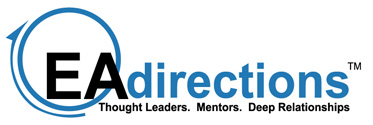One of the many interesting outcomes of today’s business climate is the increasing variety of new business partnerships. Traditional boundaries between organizations are giving way to innovative and creative relationships, driven by a combination of necessity and opportunity. Cross-company information exchange and collaboration is the central success component.
Organizations are discovering that there is often more to implementing these partnerships than is apparent at the outset, and the issues multiply with each new relationship. For example, “How can we effectively share information and collaborate with partners while protecting business confidentiality and adhering to regulatory concerns”? Those are just two among many important considerations. Issues intrinsic to external collaboration have far-reaching implications. Identifying and addressing them is tailor-made to the broad, cross-enterprise, cross-domain perspective and analyses that an EA group can bring to the table.
Many organizations are discovering that the volume of requests to share information is increasing with each new business partnership, as is the type of information exchanged. Increasingly, they are seeing demand for bi-directional collaborative interactions, in near real-time, and with a frequency that makes it difficult to respond in time to address the market opportunity. Furthermore, these collaboration requirements are contextual and don’t always fit into a standardized approach. Not only will different companies have different needs, but it is likely that there will be many different models even within a single company based on the type of partnership and the participating departments. Some cross-organization collaborative examples we have seen include legal negotiations, multi-company engineering activities, resource scheduling /provisioning, joint marketing initiatives, barter arrangements that include trading excess production capacity for a right to access an organization’s client base in a foreign market, and many other variations.
It is likely that a single standard solution cannot address the full range of scenarios an organization might encounter. The EA group should work to raise the visibility of the most pertinent issues. They should guide the creation of a general framework, including a set of rules, principles and approaches that can address them. Here are just a few of the questions organizations we work with are beginning to ask:
- What is the business vision for partnerships? How will they grow and evolve? Where do they fit in our overall enterprise model? Which business processes, business functions and information areas are involved? What is the business value to enabling these partnerships?
- What confidentiality, proprietary, legal and regulatory issues are relevant? What other business risks are in play?
- What patterns of external collaboration exist with potential partners? Are there standardized business patterns and collaboration models that will broadly satisfy business need?
- How should external collaboration integrate with our own internal collaboration models and enabling infrastructure? Should it? Do we grant access to external parties?
- How do we protect our proprietary and confidential information from being intentionally or accidentally passed on to other parties? How do we protect theirs? Do we restrict unauthorized copying? Do we lock access, encrypt, etc.?
- How do we address different data definitions, data security zones, data classifications, etc.?
- How do we ensure timely and scheduled updates to our partners? How do we alert each other to changes? How do we ensure partners are not working with expired information?
- Etc.
So, what should enterprise architects do? Get ahead of the conversation, not so much that you get tuned out, but enough that you begin asking the right questions to gauge the enterprise need. Use a multi-pronged communications approach to get the conversation started with business leaders, IT leaders, your own team and other stakeholders. Techniques can include individual discussions, facilitated sessions, and internal social media postings. Once you get a sense for the appetite of the enterprise you may see traction develop. Begin to create hard artifacts for discussion; capabilities analysis first, then principles, then iteratively build increasingly detailed models, specifically business architecture models. Remember that, at any time, you may get too far ahead for anyone to care. You can always park your work and come back to revisit later.
External collaboration is just one of the many questions that enterprise architects might want to think about in the next year. A proactive EA group’s role is to be thinking about high impact, enterprise-wide constructs at least in enough detail to have an appreciation for the issues, the scope and scale of possible approaches. Doing so will inform the organization enough to make the proper decisions when time becomes the critical constraint.
